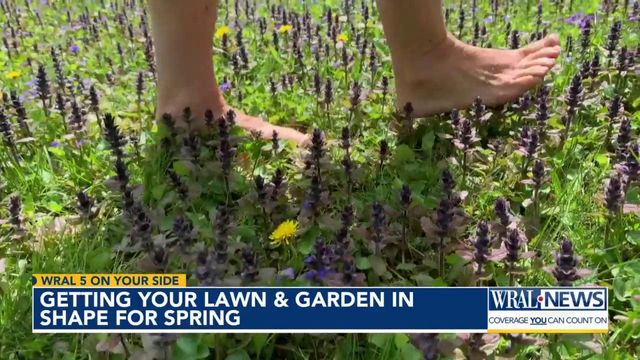4 steps to take now to enjoy your yard through spring and summer
Welcoming warmer weather means saying hello to what winter left behind in our yards and gardens – messy garden beds, dead plants, leftover fall leaves, sticks and limbs all need attention.
Follow these steps to ready your yard for outdoor fun in the spring and summer.
Tune up your tools
“One of the first things you want to do in spring is make sure all of your equipment is ready for the year. So, lawnmower, string trimmer, leaf blower, all of those might need a tune-up," says Paul Hope of Consumer Reports
Clear out the old
Clear any debris from the yard before you mow and trim, especially any leftover leaves from the fall.
Hope says, “You want to clear them before grass starts growing in the spring. That’s because if you have a dense bed of leaves anywhere on your lawn it’s actually gonna black out the sunlight and keep the grass from growing properly.”
Use dead leaves to feed new growth
Compost, or better yet, mulch leaves with your mower or tractor. The churned-up clippings will feed your lawn and reduce any needed fertilizer.
Give bees a break with No Mow May
When you finally get to the lawn, consider keeping this slogan in mind: No Mow May.
Hope sayd, “No Mow May is a chance to let small flowering plants have a chance to grow and help out pollinators.”
Of course, it’s not always an option to let the grass grow, especially in areas where ticks are a concern. There are less extreme alternatives. Instead, raise your mower's deck to cut your grass higher and extend the time between mowings. You can also find lawn-seed mixes that include bee-friendly flowers.
If you don’t need a lot of lawn space, set aside a portion of your yard to grow just wildflowers or plant a pollinator garden.
Another pollinator-friendly tip from Consumer Reports: Avoid chemical fertilizers and herbicides. They can get absorbed into your soil or eventually enter the water table and threaten the survival of pollinators — not only on your property but also throughout your community.
Enjoy the outdoors
Finally, take in all your hard work, and don’t forget to enjoy your outdoor space this spring and beyond!













